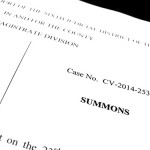- I read four personal injury-related appellate opinions published last week that I think are worth reading:
Thibodeaux v. Trahan: Like most personal injury lawyers, I have been hit with post-trial remitter motions from defense attorneys claiming that the jury’s verdict was unreasonably high. But no plaintiff’s lawyer is silly enough to file a post-trial motion for additur to raise the verdict because it will never work. I think federal law prohibits additur in federal court jury awards. Someone forgot to tell the Plaintiff’s lawyer in this rear-end accident bus case in Louisiana who appealed the trial court’s failure to award future pain and suffering. The appellate court changed not only the comparative negligence allocation but also increased the plaintiff’s damages, finding that the trial court failed to award enough damages.
Crazy, right? The facts were unique. This was a bench trial where the trial judge specifically found that the Plaintiff will need future surgery for her knee but did not award damages. Juries, I guess, get a pass on inconsistencies in their verdicts because it could result from compromise. But a trial judge deciding damages cannot form a compromise in her own mind and has to make an award consistent with the court’s findings. (Actually, I read this malpractice opinion that was decided last Thursday that makes a similar point.)
Louisiana law allows the appellate court to increase the award to the lowest amount reasonably within the trier of fact’s discretion. I don’t think Maryland law prohibits additur but there is no recorded case in Maryland where the trial court increased a damage award. I don’t know why, if we have remitter we should have additur under Goose v. Gander.
Osorio v. One World Technologies: The First Circuit affirmed a $ 1.5 million award in a product liability case in Massachusetts involving a defectively designed power saw that Plaintiff’s employer bought at Home Depot.
Plaintiff’s hand injury occurred on a construction site while operating a $179 Ryobi Model BTS15 benchtop table saw bought at Home Depot. While cutting a piece of wood, the Plaintiff’s left hand slipped and went into the saw’s blade.
Plaintiff’s attorney put up a witness at trial who invented a device that allows a table saw to sense when the blade comes into contact with the user’s body and stops the blade from spinning. This is very cool. But none of the major table saw manufacturers bought the invention.
Plaintiff’s theory why? Basically, an Oliver Stone-ian conspiracy theory that the manufacturers’ failure to incorporate this invention is because of a collective understanding that if any of them adopts the technology, then the others will face heightened liability exposure for not following suit.
Honestly, I’m not sure that entirely even makes sense and I really doubt that happened. The messenger is suspect, too: the guy who failed to sell table saw manufacturers on his technology. Continue reading

 Maryland Injury Law Center
Maryland Injury Law Center










